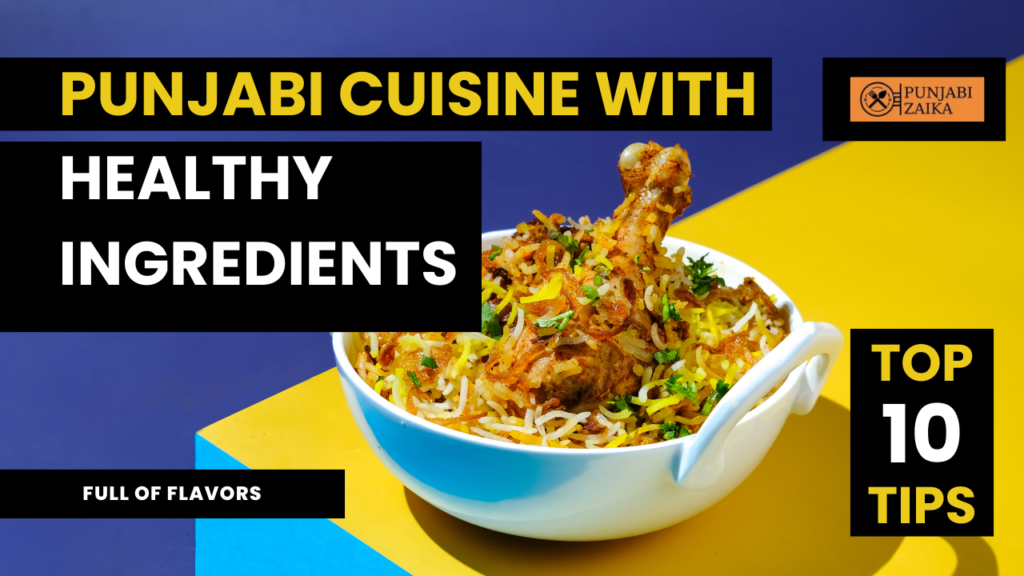Introduction:
Punjabi food is a celebration of strong flavors and deep traditions. Although Punjabi cuisine is renowned for its extravagant use of ghee and cream, it is perfectly feasible to enjoy its richness with a healthier touch.
In this blog, we’ll look at how you can enjoy the best of Punjabi food while using healthy, wholesome ingredients.

1) Opt for lean proteins.
- Meats, including fish, poultry, and lamb are frequently used in traditional Punjabi cuisine. Make your dinner healthier by selecting lean meat pieces and trimming visible fat before cooking. Tofu, lentils, or chickpeas could be used as protein sources if you prefer vegetarian meals.
2) Embrace Whole Grains:
- Replace processed grains like white rice with better options like brown rice, quinoa, or whole wheat roti. Fiber, vitamins, and minerals included in whole grains help preserve energy levels and improve nutrition.
3) Use heart-healthy oils:
- Ghee, a key ingredient in Punjabi cuisine, can be used sparingly or swapped out for oils that are good for the heart, such as olive or mustard. Without adding saturated fat, these substitutes bring a delicious flavor.
4) Load Up on Vegetables:
- Make the most of the variety of vegetarian recipes available in Punjabi homemade cuisine by adding a vibrant assortment of veggies. Foods such as saag (cooked mustard greens), bhindi masala (spiced okra), and baingan bharta (roasted eggplant) are not only tasty but also nourishing.
5) Spice It Up:
- The flavorful spices used in Punjabi cuisine are well known. Spice up your meals with ingredients like fenugreek, cumin, turmeric, and coriander. These spices not only enhance food’s flavor but also provide a number of health advantages, such as anti-inflammatory effects.
6) Choose Low-Fat Dairy:
- In Punjabi cuisine, yogurt, and paneer, an Indian cottage cheese, are frequently used. Choose low-fat or Greek yogurt, and consider grilling or roasting paneer instead of frying it to lessen
- the amount of fat.
7) Practice Portion Control
- Portion control is important because Punjabi meals are frequently filling. For a well-balanced meal, serve smaller servings of your favorite dishes and pair them with salad or raita.
8) Explore Healthy Substitutes:
- Think outside the box when replacing unhealthy ingredients. Yogurt or cashew paste works well as gravy thickeners in place of heavy cream. Use organic sweeteners like honey or jaggery in place of refined sugar.
9) Homemade Goodness:
- You can completely manage the ingredients and cooking techniques when preparing Punjabi food at home. While maintaining the natural flavors, you can use less oil, less salt, and healthier replacements.
10) Hydration and Digestion:
- After enjoying a Punjabi feast, aid digestion with a soothing cup of warm water infused with ginger and lemon. This traditional practice can promote better digestion and overall well-being.
Conclusion:
You can enjoy the flavors of Punjabi cuisine while making healthy food choices. It is a veritable treasure trove of mouthwatering foods. Lean proteins, whole grains, an abundance of veggies, and judicious use of fats and spices can all be used to produce a meal that is both satiating and nourishing. Enjoy the best of both worlds by indulging in the delicious flavor of Punjabi cuisine while maintaining a healthy lifestyle.



